Kenya Great Migration 2025: Essential Guide & Tips

Are you eager to experience the great wildebeest migration?
Every year, one of nature’s most magnificent spectacles unfolds on the Serengeti-Masai Mara plains captivating travellers and wildlife enthusiasts alike. The great wildebeest migration is a breathtaking display of wildlife movement as 1.5 million wildebeest and other herbivores navigate treacherous terrains while facing predators and natural challenges
The Masai Mara National Reserve offers a front-row seat to this awe-inspiring event. Visitors get a once-in-a-lifetime opportunity to witness nature’s grandeur in action. Get ready to immerse yourself in the great wonders of the animal kingdom with our 2025 Kenya Migration safari tours.
How to Plan 2025 Kenya Migration Safari - Video by James Gatheru - CEO AjKenySafaris.com
Book Your 2025 Wildebeest Migration Safari With Us
To book your great wildebeest migration safari in Kenya’s Maasai Mara, we invite you to contact us via phone or WhatsApp at +254-704-532-105. You can also connect with us via email at safarioffers@kenyaluxurysafari.co.uk or safarioffers@ajkenyasafaris.com.
The great wildebeest migration happens in two countries – Tanzania’s Serengeti National Park and Kenya’s Maasai Mara. James Gatheru, our senior consultant, is knowledgeable about the migration cycle and can help plan a safari in the Serengeti plains or the wild lands of Maasai Mara.
Masai Mara Migration Experiences - Photos by Our Guests
Exploring the Phenomenon: Kenya's Great Migration
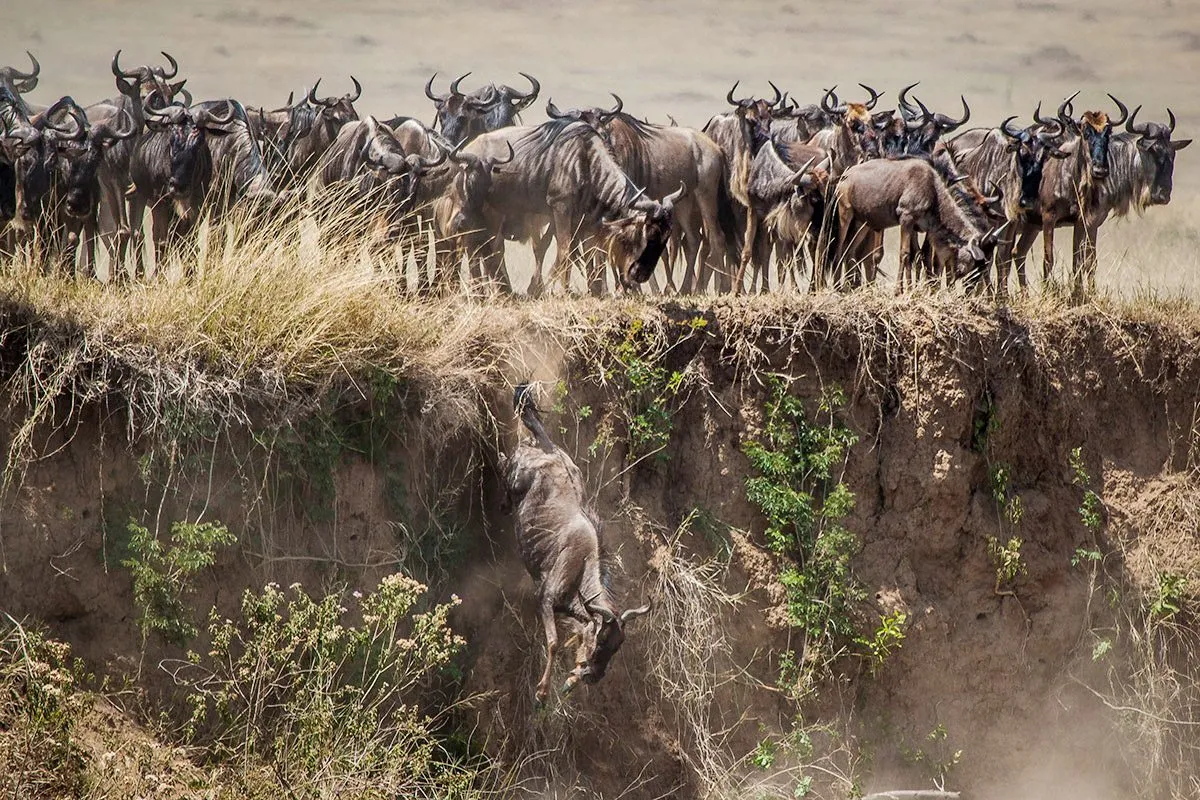
The Great Migration is not just a natural event; it’s a life-changing journey for over a million wildebeest, zebra, elands, and gazelles.
These brave souls traverse the expansive Serengeti-Masai Mara ecosystems, embarking on a voyage like no other in search of greener pastures and fresh water. Along the way, they battle diseases and predators such as the African wild dog, lions, cheetahs, hyenas, and zebras. These predators often pick off newborn and weaker animals but will have no trouble at all taking on the larger ones. If that’s not bad enough, there is the treacherous crocodile-infested Mara River to contend with.
Rushing currents threaten to sweep away the weaker or more hesitant individuals while hungry crocodiles lie in wait for their meal. It’s a scene of chaos and danger, yet also one of resilience and survival as frantic herds push forward in their quest for sustenance. The spectacle is so grand that it’s often referred to as one of the world’s seven natural wonders.
But this journey is a complex one. The migratory patterns of these herds, which are generally believed to move in a clockwise direction, are incredibly complex. Weather patterns, pasture availability, and the timing of the mating season and the calving season influence the annual wildebeest migration. Let’s look at the migration cycle in detail next.
The Stages of the Annual Migration
The Great Migration is a fascinating cycle and complex journey that spans the Serengeti ecosystem in Tanzania and the Maasai Mara in Kenya. Over a million animals embark on this journey yearly, dictated primarily by the need for fresh grazing land and survival. This constant movement brings them face-to-face with deadly challenges including fatigue, diseases, and predators. Let’s look at the migration route and cycle.
Calving Season (December to March)

The migration cycle begins with the calving season in the southern Serengeti plains of Tanzania. As the rainy season arrives, the nutrient-rich short grass plains provide abundant sustenance for the wildebeest herds.
Pregnant wildebeest gather in large numbers to give birth to their young, with hundreds of thousands of calves born during this time. The herds linger here as wobbly calves try to find their footing.
It’s also a heart-rending time for these herds as predators lions, cheetahs, wild dogs, and hyenas swoop in to take advantage of the easy prey.
Grasslands and Migration (April to June)
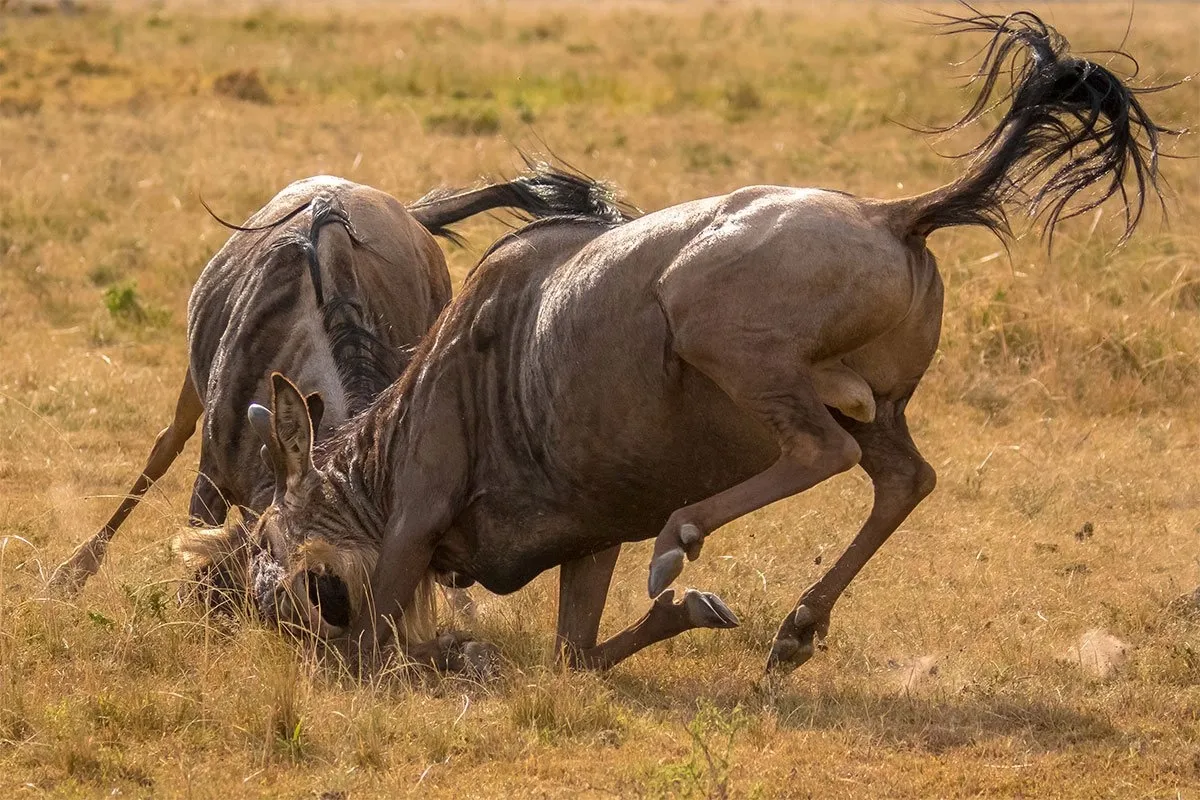
With the onset of the long rains in April and May, migratory herds begin their northward migration toward the Moru Kopjes and the Simba Kopjes. This stage is characterised by vast herds stretching as far as the eye can see, accompanied by zebras, gazelles, and other herbivores. Wildebeest funnel up into central Serengeti in search of fresh pastures.
This is also the mating season and you’re likely to see male wildebeest, known as bulls, engage in territorial displays and vocalizations to assert dominance and attract mates. They may also engage in sparring matches with rival males to establish hierarchy and breeding rights. The competition can be fierce, with dominant males mating with multiple females within their territory.
Female wildebeest, known as cows, come into estrus during this time, signalling their readiness to mate. They may display receptive behaviours such as approaching males, vocalizing, and allowing the males to mount them.
The Simba and Moru Kopjes play host to several lion prides, leopards, and hyenas so you can expect plenty of predator-prey action.
By June, herds in central Serengeti come up to one of their first river crossing—the Grumeti River. Nile crocodiles lie in wait as the herds plunge into the rushing waters, creating a dramatic and perilous spectacle.
Mara River Crossings (July to September)
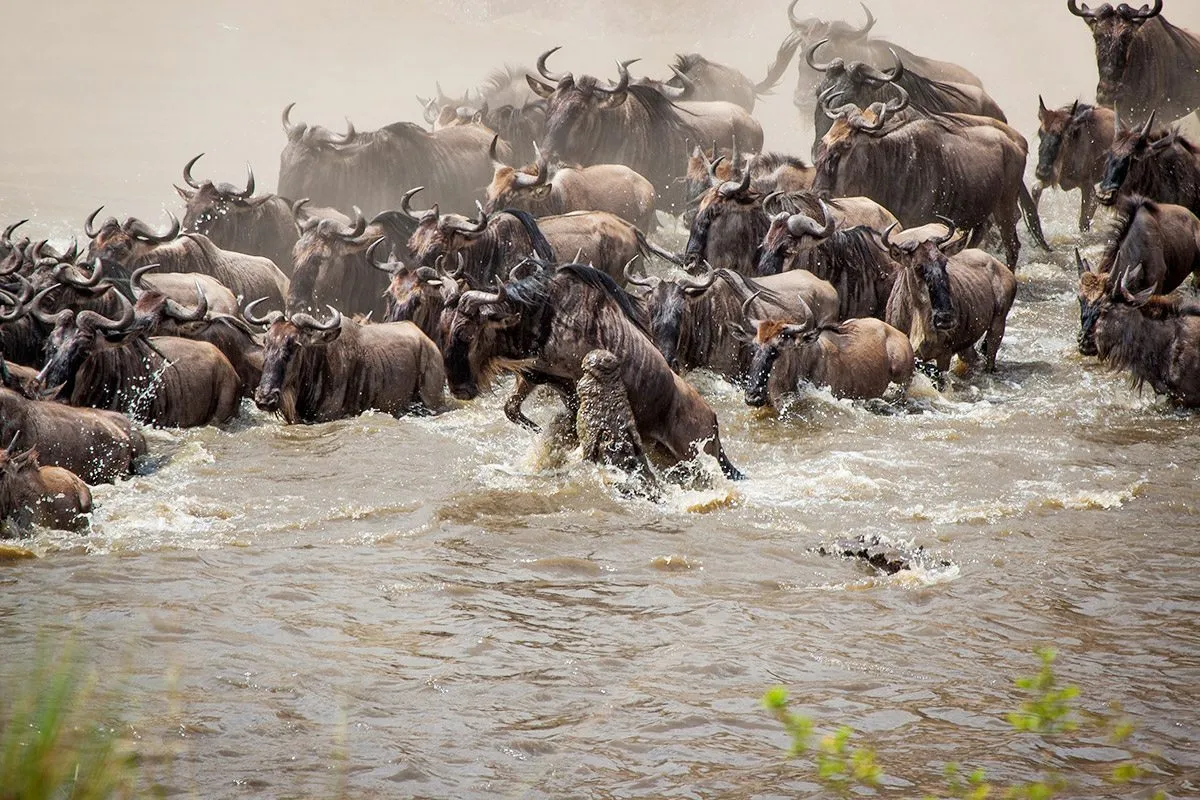
With the Grumeti River behind them, the herds are now in the Grumeti region and northern Serengeti close to the Mara River. They seem undecided as they peer at the treacherous waters and hesitate. With good reason too. Massive Nile crocs stand in their way.
The herds may stand for days, possibly thinking of a safe way to get to the opposite bank without falling prey to hungry crocodiles. They exhibit a mix of urgency and hesitation at the river banks, often gathering on ledges above the perilous waters before finally making the crossing
In a show of bravery, one wildebeest takes the plunge and the others follow. Thousands of wildebeest brave the rushing waters, dodging crocodiles and navigating steep banks. Some find the crossing daunting and choose to turn back causing panic and confusion. Crocodiles descend on unsuspecting animals heightening the chaos and making for dramatic river crossings.
The Mara River crossings are more popular than those in the Talek River – a tributary of the Mara River. Some herds wander further in search of “safer” crossing points, ending up on the banks of the Talek River.
The sight and sounds of herds and the crossings at the Mara and Talek rivers create an unforgettable spectacle for all witnessing the Masai Mara migration.
Maasai Mara Grazing (October to November)

Those that survive to tell the story (and there are plenty of them!!) are now spread out in Kenya’s Masai Mara where there’s abundant grazing land. The abundance of food sustains the herds during their time in the Masai Mara, allowing them to replenish their strength before the cycle begins anew.
Return to Serengeti (November to December)

The Masai Mara Reserve is smaller compared to the Serengeti National Park meaning it’s only a matter of time before the million-plus visitors deplete its grasslands. As the grasslands dry up and the short rains come in, the wildebeest begin their journey back to the Serengeti completing the migration cycle.
Early November sees the animals re-crossing the Mara River on their southward trek through the western Loliondo and the Serengeti’s Lobo area. Heading south means the circular migration is about to start again. Soon it will be calving season and the cycle of life begins anew.
Timing Your Safari: When to Witness the Great Migration in Kenya
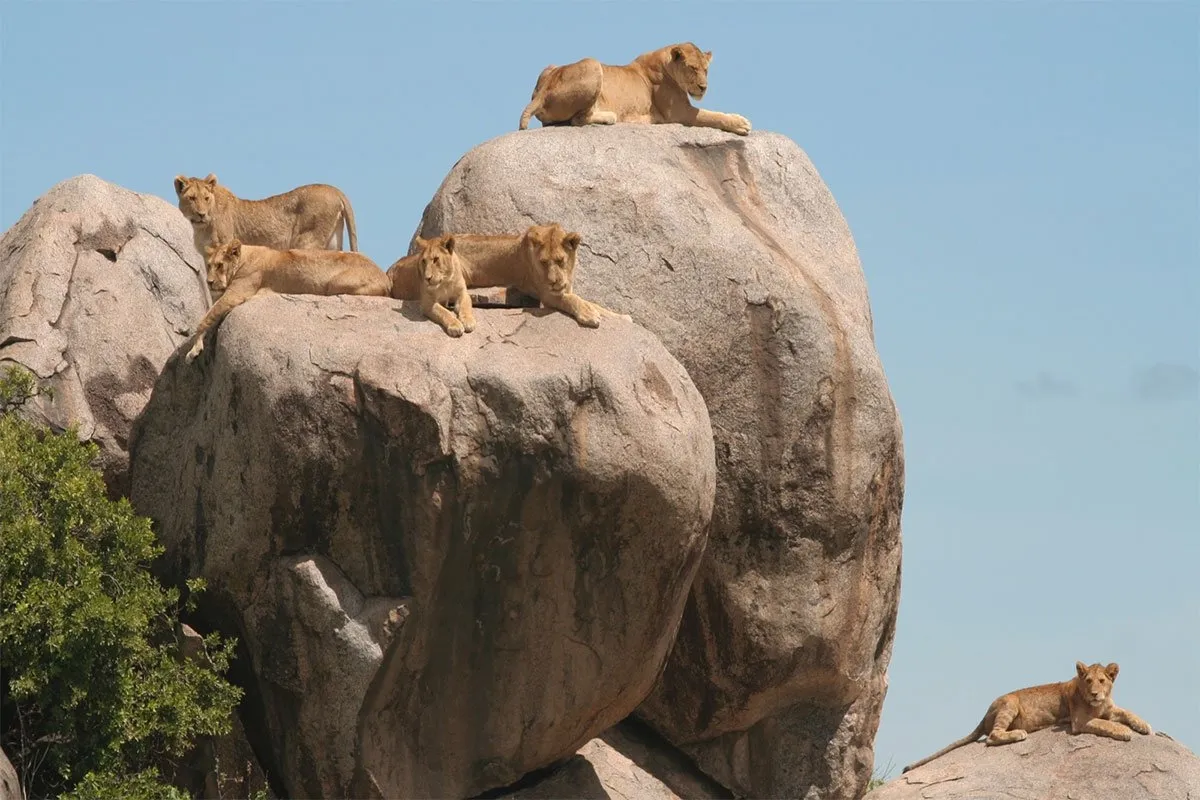
Organizing a safari to witness the Mara-Serengeti Migration is quite a task. Timing is crucial and can significantly enhance your viewing experience. Typically, the peak visibility in the Masai Mara stretches from July to October. The much-anticipated Mara River crossings usually unfold from late July to August and sometimes extend into September.
However, the migration’s movement is largely influenced by the cycle of rainy and dry seasons, making it somewhat unpredictable. During the peak migration months, the Masai Mara typically experiences average daytime temperatures of around 25 degrees Celsius, with sunny and dry conditions interspersed with occasional rain showers.
Key Viewing Spots for the Wildebeest Migration Safari

Across the Serengeti and Masai Mara are several key spots where you can watch wildebeest migrate. You can opt for mobile camps that follow the migration routes or stay at luxury lodges, mid-range accommodation, and basic tents.
Let’s check out some of the key viewing spots and where to stay
Ngorongoro Conservation Area for Calving Time
Calving takes place in the region around the Ngorongoro Conservation area. Best accommodations in Southern Serengeti include Serengeti South Camp, Mwiba Lodge, Namiri Plains, Four Seasons Lodge, and One Nature Nyaruswiga Camp. Asilia Olakira Migration Camp is a mobile camp that follows the wildebeest from calving time to river crossing.
Central Serengeti for Breeding Season
The rutting (breeding) season happens in the central Serengeti. If you’re up for some passionate posing and courtships alongside predator-prey action you can stay at Ubuntu Camp, Serengeti Under Canvas, Kiota Camp, and Namiri Plains.
Grumeti River Crossing
As front runners reach the Western corridor and make it to Grumeti River, you can catch some river crossing action here. Best accommodations include Grumeti Serengeti River Lodge, Singita Faru Faru, and Grumeti Serengeti Tented Camp.
Maasai Mara River Crossing
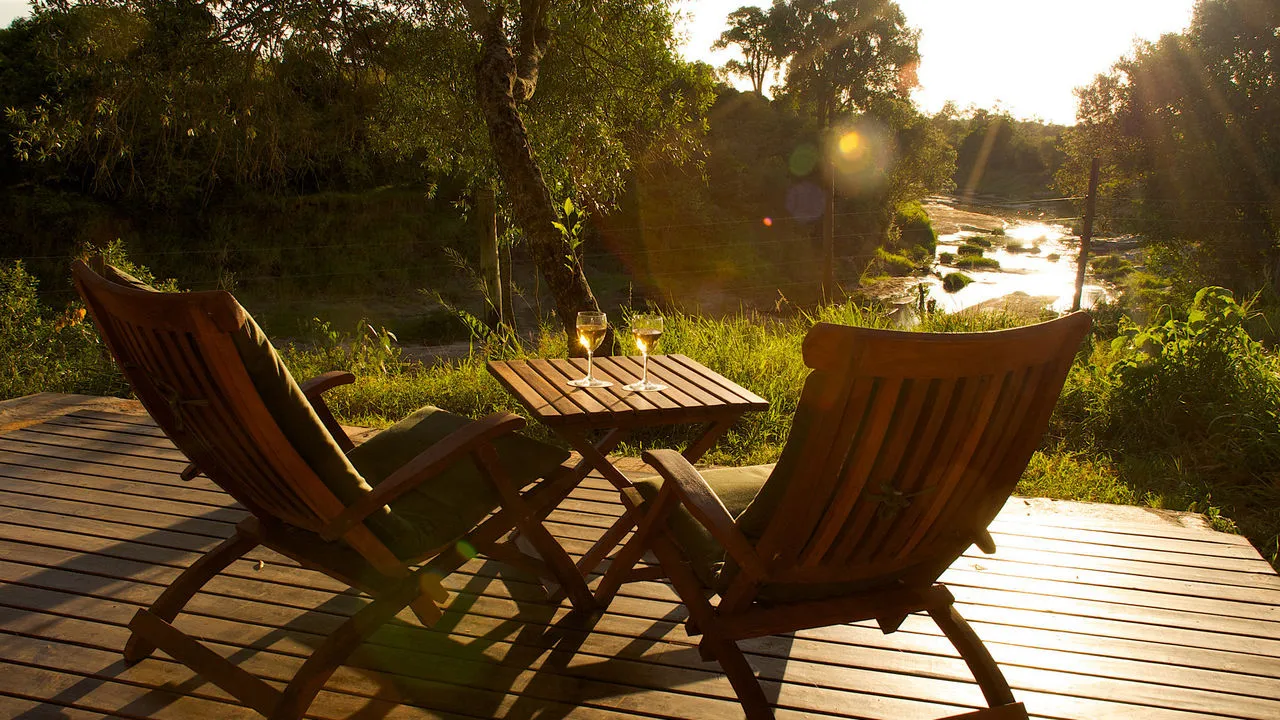
If you would like to observe the Mara River migration from Serengeti National Park, you’ll find several accommodations in the Northern Serengeti region. Top lodges and camps include Sayari Camp, Kuria Hills Lodge, Lamai Serengeti Camp, and Mara River Tented Camp.
For views of the migration in Masai Mara, there are several accommodation choices in this prime river crossing territory. You can stay at the Entim Mara, Angama Mara, Bateleur Camp, Sanctuary Olonana, Il Moran Camp and Mara Serena in the famous Mara Triangle.
Naboisho camp and Mahali Mzuri in private conservancies are well situated for wildebeest migration viewing. The Mara Intrepids Camp and Rekero Camp overlook the Talek River offering guests interrupted views of the river crossings.
Planning Your Migration Safari Trip
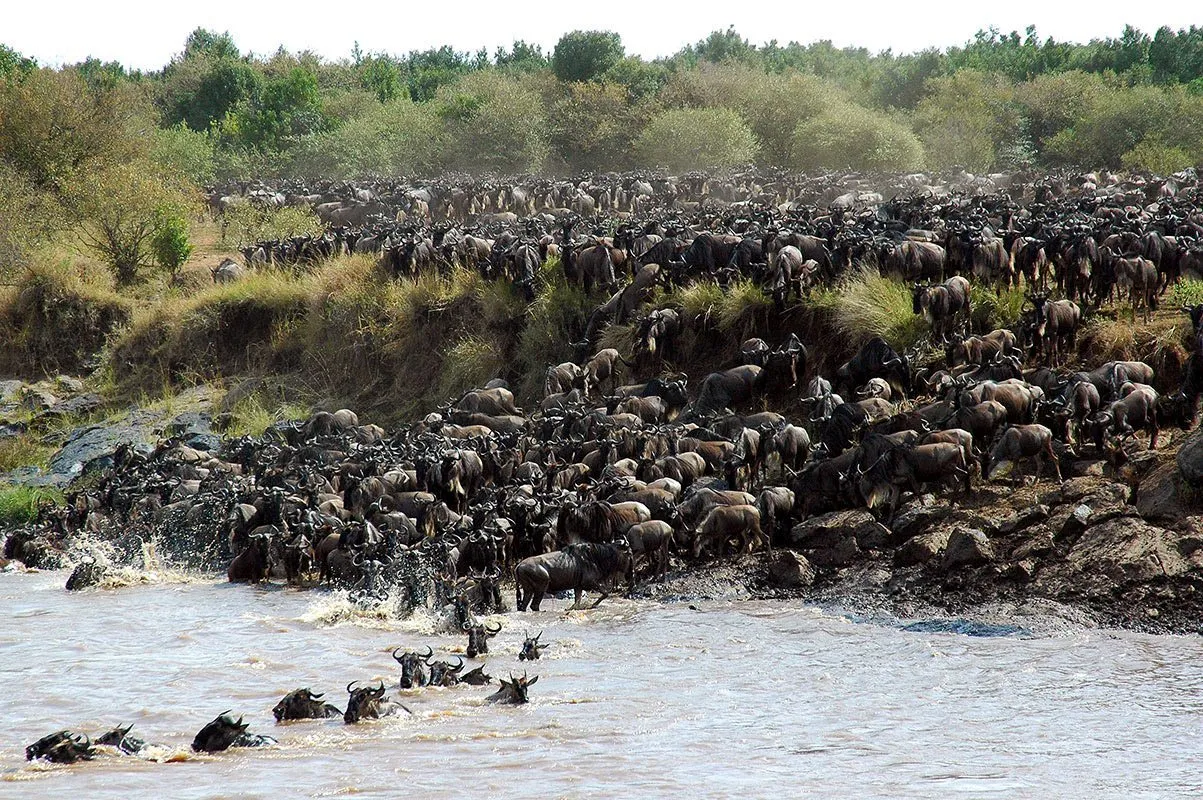
A well-thought-out plan for your Great Migration safari trip can elevate your experience, allowing you to appreciate this unique wildlife spectacle. Let’s delve deeper into the various aspects you need to consider when planning your safari.
Choosing the Right Tour Package
Migration safari packages depend on your duration of stay, preferred accommodation and transport (road or air), group size, time of year, and additional activities. Luxury lodges and air transport cost more as do hot air balloon rides to see the migration from above, walking safaris, and spa treatments.
If you’re bringing young children along or want extra privacy, your tour operator should be able to identify a lodge/camp that can accommodate you.
Navigating the Masai Mara: Transport & Accessibility
Most travellers fly into Nairobi’s Jomo Kenyatta International Airport and then take a short flight or road transport to the Masai Mara National Reserve. Flights leave the Wilson Airport and land at one of the multiple airstrips in the Masai Mara. Preferably one close to your accommodation. Upon arrival, visitors are generally transported to their accommodation by 4×4 vehicles supplied by safari operators.
Road transportation is a more popular means of travel. The journey takes approximately four to five hours to reach the nearest gate of the reserve and then a few more hours ( 1-3 hours) depending on your lodge’s location.
Once you arrive at your lodge or camp, you can freshen up and start your adventure in the wild Masai Mara.
Summary
In the grand theatre of nature, the Great Migration stands out as a spellbinding spectacle, a testament to the resilience and strength of the wild. As the animals traverse the Serengeti Mara ecosystem, the migration encapsulates their raw beauty and the harsh realities of the wild.
From northern and eastern Serengeti to the Masai Mara we can arrange an amazing safari experience and long-lasting memories. It’s time for you to witness firsthand the greatest wildlife spectacle on Earth. Talk to us today.
Frequently Asked Questions
Next, we look at the most common questions we get about Kenya’s great migration.
What Month Is the Great Migration in Kenya?
The Great Migration in Kenya happens between July and November. July and August are the peak times since wildebeest cross the Mara River in large numbers.
Is Tanzania or Kenya Better for the Great Migration?
For a longer Great Migration window, Tanzania is a better choice as you can see the herds throughout the year, compared to Kenya’s shorter window from July to October.
Where Is the Best Place To See the Great Migration in Kenya?
The best place to see the Great Migration in Kenya is the Masai Mara. Choose a camp or lodge in the right location, with key areas being the Masai Mara and the far north Serengeti (July to October) and the Serengeti’s southern plains (January to March).
When Is the Best Time To Witness the Great Migration?
The best time to witness the Great Migration is from July to October. The most significant Mara River crossings occur from late July to August, extending into parts of September.
How Can I Choose the Right Tour Package for My Great Migration Safari?
When choosing a tour package for your Great Migration safari, consider your duration of stay, accommodation options on offer, and the number of people travelling.
